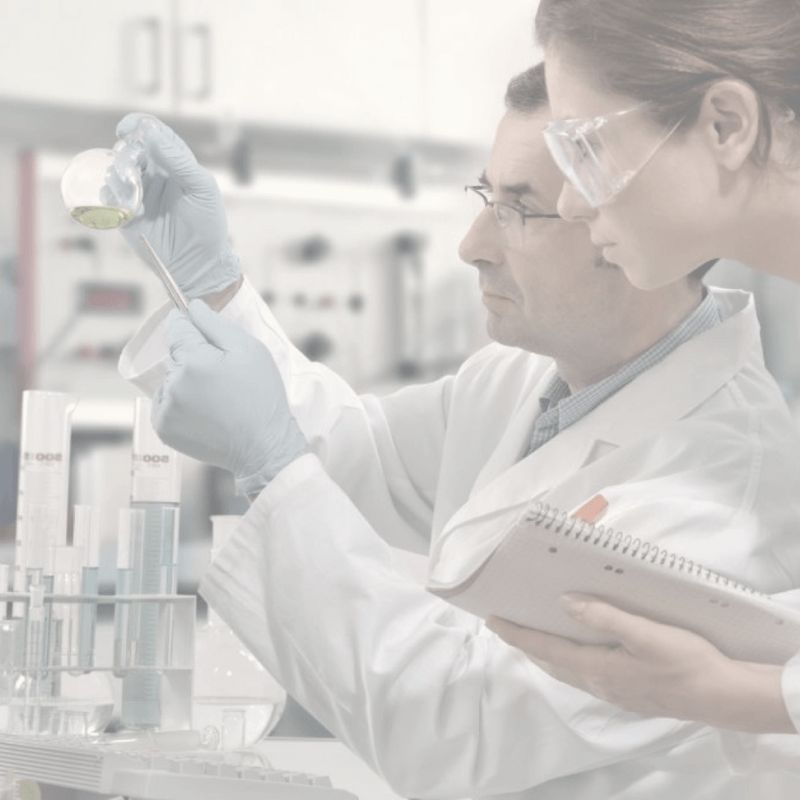USING QIS LABLINK TO MANAGE YOUR LABORATORY DATA
IS YOUR LAB CONNECTED TO YOUR SHOP-FLOOR PROCESSES?
Managing all the activities in your laboratory is a complex task. In a modern manufacturing environment, the lab results must be communicated quickly and efficiently to all relevant parties.
When a company uses SPC (Statistical Process Control), if quality data is collected, analyzed, and fed back into the manufacturing process quickly, it can significantly reduce its cost of poor quality.
Quality management software helps the quality team collect and analyze data from the production process; however, there may be a delay in collecting that data and corrections being fed back into the process. QIS provides quality data in real-time so that the decision-making process can be almost instant.
QIS LabLink is a feature of the QIS software platform and is designed specifically for use in a laboratory environment. Because the LabLink module is fully integrated into the whole QIS package, your lab results can be instantly communicated to all company areas in real-time.
LabLink allows your technicians to automate, retrieve, and manage your sample test data to provide accurate reporting back to the shop floor. The tablet application allows your technicians to record test results quickly and efficiently without being tied to a workstation.
And the full connectivity of QIS means that all your measurement devices can be connected into one overarching system.
Apart from measuring, collecting, and collating the sample data, you must be sure your instruments are calibrated and provide accurate measurements.
What is instrument calibration?
In simple terms, calibration is comparing a measurement device against a universally accepted standard. The critical part of the process is that the calibration is documented in a calibration certificate that details all the criteria used when calibrating the device. It will include the measurement equipment used, environmental conditions such as heat and humidity, dates, and details of the personnel who carried out the calibration.
Traceability is a fundamental part of the calibration process. The calibrating equipment should be calibrated to a higher standard, which may mean a national accreditation agency must calibrate it. The traceability chain is critical as it can invalidate the calibration results if it’s broken at any point.
Why is instrument calibration necessary?
Clearly, the devices used for measuring laboratory samples have to be accurate. The lab results can only be as precise as the devices used to measure them, so calibration is an essential part of the laboratory management process. The whole point of instrument calibration is to reduce uncertainty in your sample measurement. In industries with strict standards, such as food or pharmaceutical manufacture, the implications of inaccurate measurements can be catastrophic. The damage to a company’s brand can be fatal through not having a robust calibration system in place.
QIS LabLink provides the ability to manage all instrument assets, record their pertinent details and most importantly, log and track calibration requirements in one central platform. LabLink allows you to set up calibration schedules for all your devices so you (and your customers) can be confident in the accuracy of your quality data. The integral calibration calendar alerts your quality team to upcoming calibration requirements and helps you manage your laboratory assets efficiently and effectively, with complete traceability.
How often should you calibrate your laboratory equipment?
It’s a question frequently asked and not an easy one to answer. It depends on many factors, such as the type of measurement devices used, specific industry requirements, and associated costs.
Annual calibration is generally accepted as standard, but it may be that your equipment needs more regular calibration intervals. They would be continually calibrated in the ideal world, but that’s not feasible, cost-effective, or practical. QIS LabLink lets you create a calibration schedule for each piece of equipment based on the criteria you determine.
Moving on from calibration is the related subject known as Gage Repeatability and Reproducibility (Gage R&R).
What is Gage R&R?
Variation is a critical factor to consider in any measurement system. All measurements are subject to a degree of variation, which can stem from two areas – the measurement device itself (repeatability) and the person using the measurement device (reproducibility).
Importantly, Gage R&R doesn’t measure the quality of the produced parts, only the quality of the measurement system.
Why is Gage R&R necessary?
Variation exists in all manufacturing and measurement processes. It’s an inescapable fact. Gage R&R helps companies to understand and account for that variation. A key feature of QIS is collecting and communicating live process data for SPC (Statistical Process Control), but that SPC process can only be as good as the quality of the data supplied.
As such, Gage R&R is critical to ensuring the accuracy of the quality data collected, and QIS LabLink allows you to carry out Gage R&R studies within one central platform.
QIS Gage R&R allows you to understand:
• The amount of measurement system variation compared with the process variation
• The amount of variation in the measurement system that is due to operator influence
• The measurement system’s capability to discriminate between different parts
The QIS reporting function helps your quality team to examine the probability of measurement error and understand the source of variation.
Summary
QIS gives a manufacturing company a complete analysis and departmental integration of its quality activities. The benefits of this holistic system are shared between every department in the plant. From shop floor to top floor, quality data is collected, analyzed, and circulated to all relevant personnel in real-time, and the system is configurable for each individual company.
For more information on QIS and LabLink, contact our sales team at info@qisoft.com

